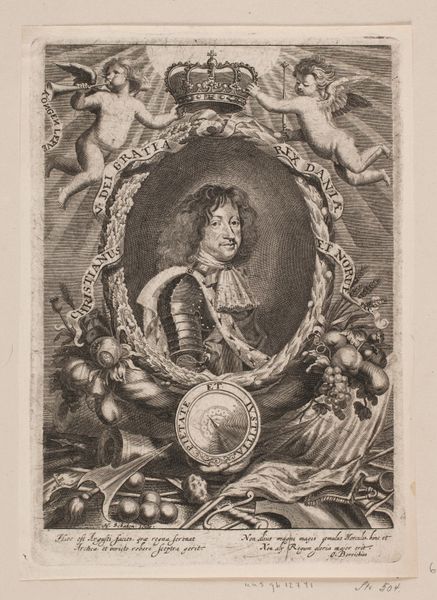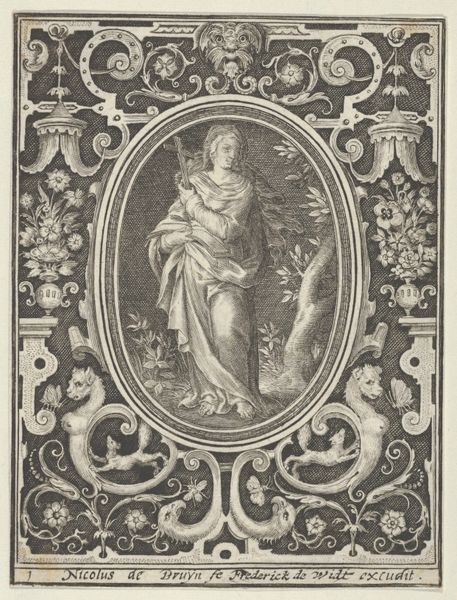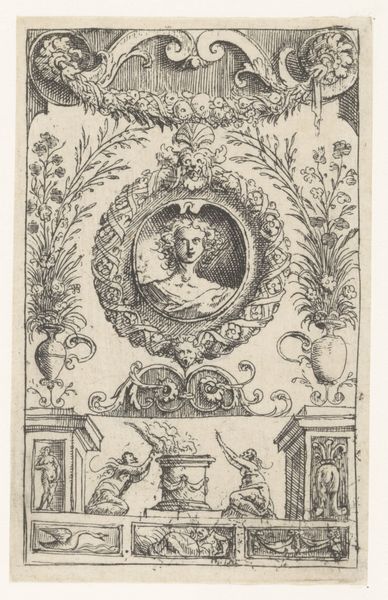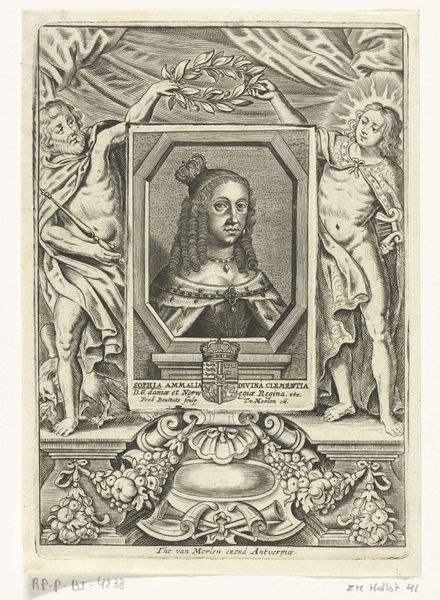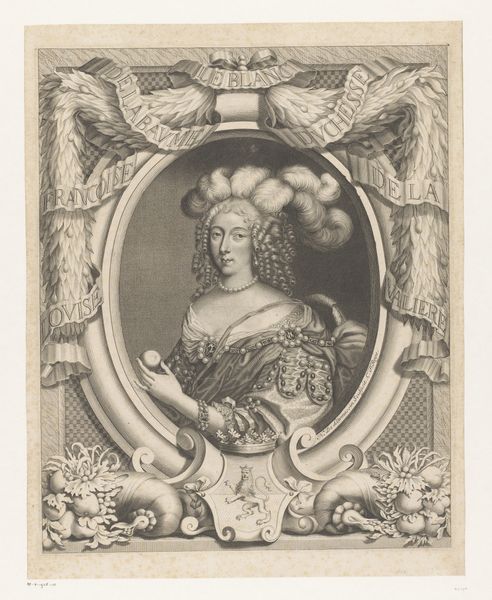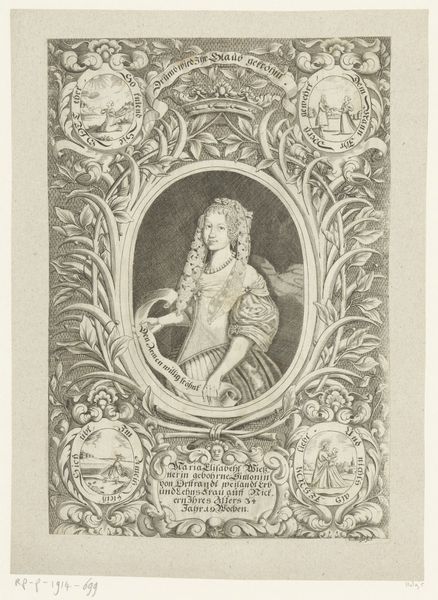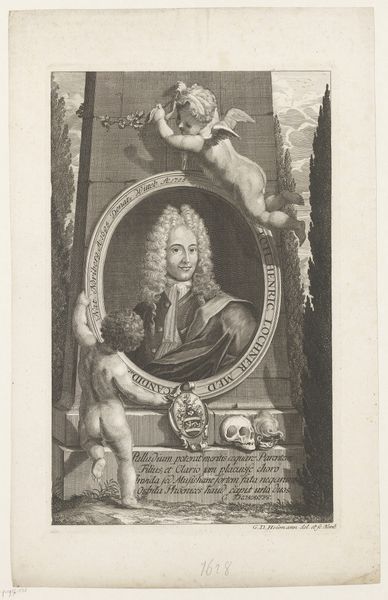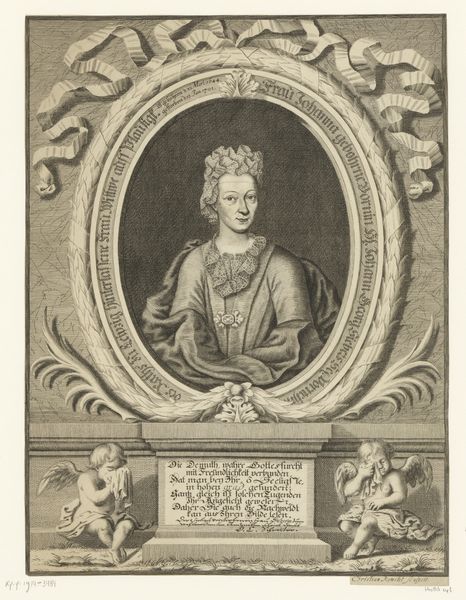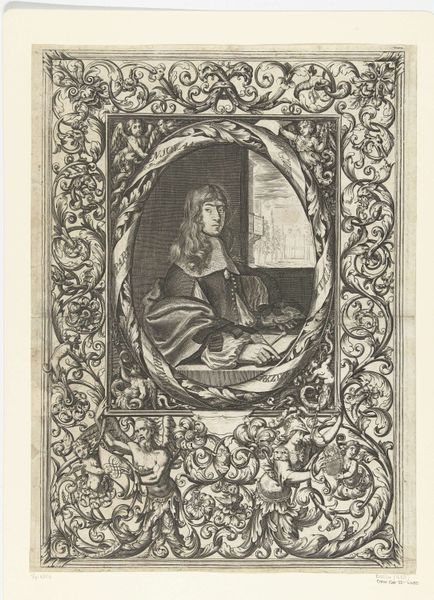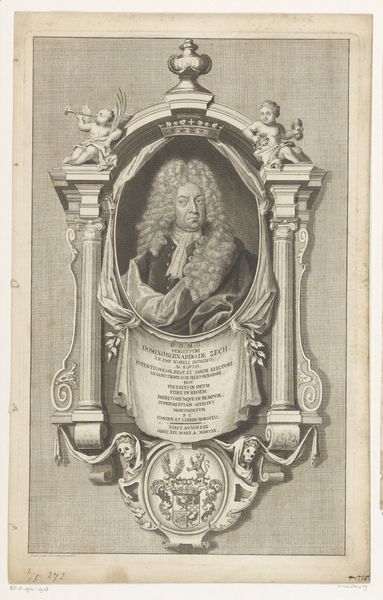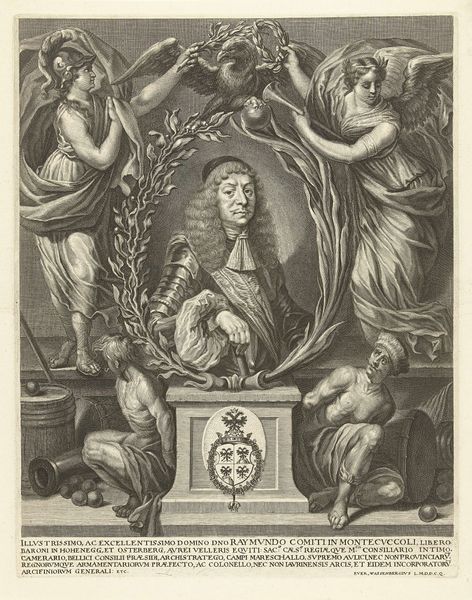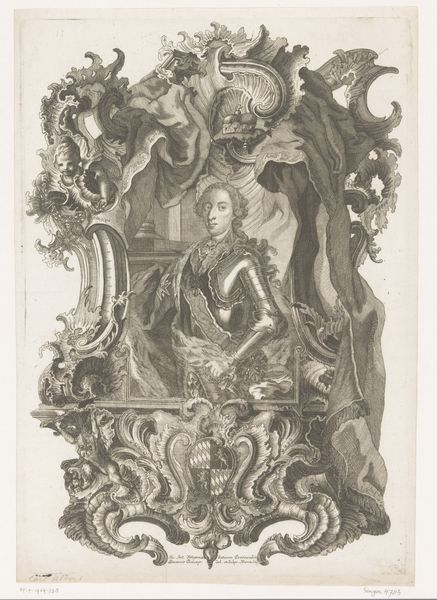
print, engraving
#
portrait
#
baroque
# print
#
old engraving style
#
figuration
#
genre-painting
#
history-painting
#
engraving
Dimensions: height 384 mm, width 281 mm
Copyright: Rijks Museum: Open Domain
Curator: Oh, hello there. Welcome to this next piece, a detailed engraving titled “Portret van Anna Catharina Hüphoff." It comes to us from the hand of Christian Romstet sometime between 1665 and 1721. Editor: My initial thought is that it’s a bit severe, but that floral border really softens it. It almost feels like a stage set for her to perform. I’m drawn to the intense detail, you can almost feel the texture of her gown just by looking. Curator: Indeed, it's that exquisite engraving work that makes it so captivating. It feels intensely Baroque. You have the formality of the era combined with that wonderful embellishment. I can't help but wonder what stories that stern face could tell. Editor: I’m intrigued by that lower portion, it’s really decorative, it draws my focus from the portrait to all those heraldic details and writing, becoming more interested in the materials—the ink, the paper—and the labor needed to create it, and its purpose. This engraving probably circulated among a very particular group of people, consumed and displayed to uphold power dynamics, wouldn’t you say? Curator: That's a compelling point. Engravings, at the time, acted as social currency of sorts. These portraits gave tangible presence and preserved social standing. This wasn't just a decorative piece; it played an active role in reinforcing societal hierarchies. There's that tension again, a kind of public performance within a private world. The materials reflecting both opulence and the tools to maintain a grip on power. Editor: Yes, it all speaks to this really interesting friction. It reminds us that even what we see as 'art' is embedded in those practical contexts of class and consumption. We get these clues of status. But there is the reality of making this: time, skilled labor, the supply chains, and who benefitted most from that process. Curator: Precisely, it is through this artistic lens that we might discover social implications. Thank you for helping peel away the layers! Editor: And thank you, for reminding us that these objects are less about aesthetic pleasure and more like snapshots of the lives entangled with making them.
Comments
No comments
Be the first to comment and join the conversation on the ultimate creative platform.
